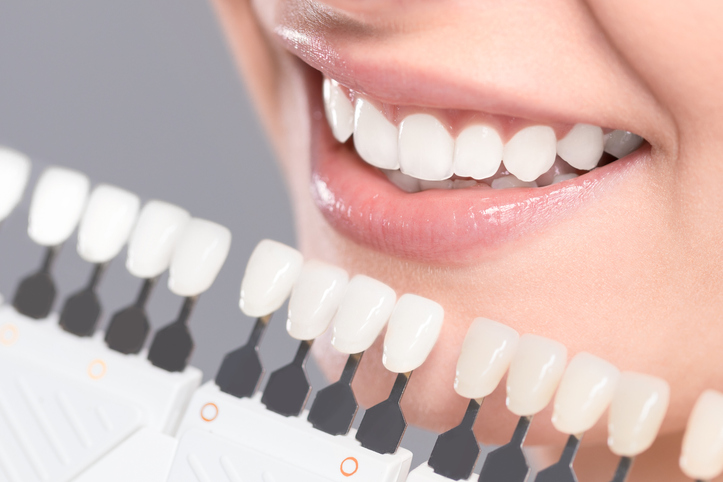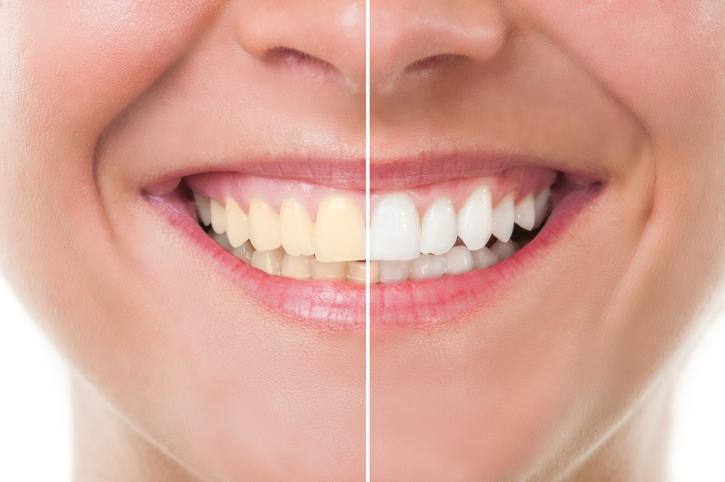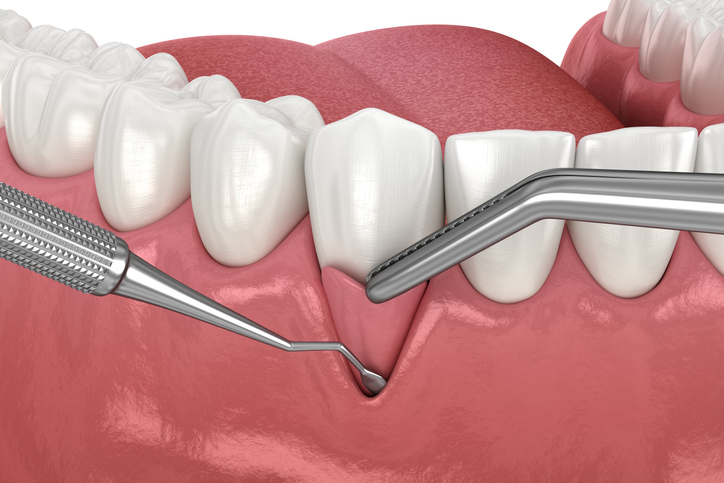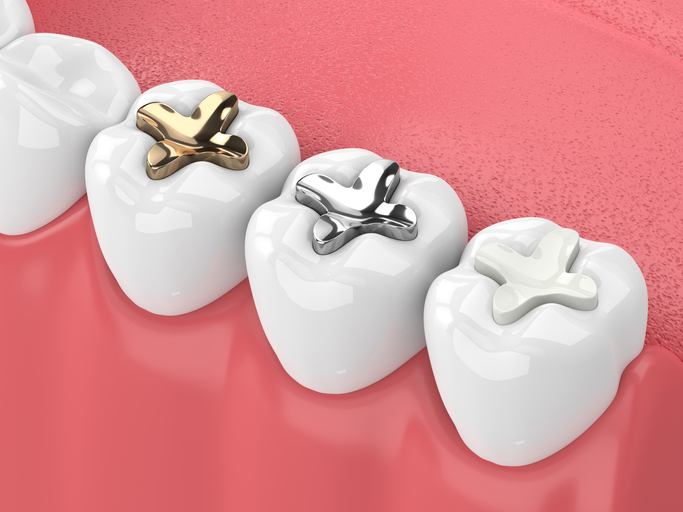People choose aesthetic dental procedures or surgeries for various reasons – to correct misshaped, discolored, chipped or missing teeth, treat an injury or just improve overall appearance. Whatever the reason, the ultimate goal is to restore a beautiful smile.
For these and many other reasons, aesthetic dentistry has become a vital and important part of the dental profession.
Some of the more common procedures involve:
- Bonding
- Contouring and reshaping
- Veneers
- Whitening & bleaching
- Soft tissue grafts
- Replace old and unsightly fillings
- Gum lift
Bonding
Bonding is a procedure often performed in order to fill in gaps or change the color of your teeth. It typically only entails one office visit, and the results last for several years.
When teeth are chipped or slightly decayed, bonded composite resins may be the material of choice. In bonding process, a tooth-colored material is applied to a tooth`s small cavities and broken or chipped surfaces, sculpted to an ideal shape, hardened, and then polished for an ideal smile.
Bonding is more susceptible to staining or chipping than other forms of cosmetic restoration such as veneers.
Veneers
Veneers are ultra-thin pieces of porcelain or plastic coatings that are placed on the surface of the front teeth to change their color or shape and mask undesirable defects, such as teeth that are badly stained, chipped, oddly shaped, unevenly spaced or crooked.
Veneers are usually made by a dental lab technician working from a model provided by your dentist. Veneers are usually irreversible because it`s necessary to remove a small amount of enamel from your teeth to accommodate the shell.
Porcelain veneers have a longer life expectancy and color stability than bonding, and highly resist permanent staining from coffee, tea, or even cigarette smoking and are reasonable facsimiles of natural teeth, but not the perfect replacements. It`s not uncommon to see slight variations in the color of porcelain veneers upon close inspection, as this occurs even in natural teeth.

Typically, veneers entail at least three appointments:
- Diagnosis and treatment planning
- Preparation
- Usually lasting one to two hours, the teeth are lightly buffed to allow for the small added thickness of the veneer. Usually, about a half a millimeter of the tooth is removed, which may require a local anesthetic. During the same visit, a mold is taken of the teeth, and sent to the laboratory for the fabrication of the veneers.
- Bonding
- Also lasting one to two hours, the veneers are placed on the tooth surface with water or glycerin on the teeth to check their fit and adjust its color to match the color of your teeth. The patient’s teeth surface is prepared with a special chemicals and veneer is applied with visible light beam or laser to cause a catalyst to be released and hardening the bond.
- Follow-up
- After one or two weeks, you`ll return for a follow-up. During a two-week adjustment period following the procedure, there may be some noticeable change of size and shape in your teeth. It is important to brush and floss daily.
Teeth Whitening & Bleaching

As the term implies, whitening and bleaching is a popular procedure to make teeth whiter and effectively restore a brighter smile.
Teeth Whitening
More and more people today are choosing tooth-whitening procedures to reverse the effects of aging and abuse from food and tobacco stains.
Whitening agents actually change the color of your teeth, but only are effective on certain types of stains. These products also are not as effective on pitted or badly discolored teeth, or on restorations such as crowns, bridges, bonding and tooth-colored fillings (porcelain veneers or dental bonding may be more appropriate in this case).
Some commercially available “whitening toothpastes” can be somewhat effective at removing stains and making teeth a few shades brighter. However, many of these products have abrasive substances that can actually wear away your tooth’s enamel.
Professional whitening performed by our office is considered to be the most effective and safest method; done properly, tooth whitening can last as long as five years. Over-the-counter whitening systems are somewhat effective as long as they are monitored and directions followed closely.
Bleaching
Bleaching and non-bleaching products are the two basic kinds of whitening products available today.
Bleaching products work with a chemical called peroxide and can brighten your teeth several shades and non-bleaching products normally use abrasives or chemicals and only remove surface stains on teeth.
Mildly stained teeth usually only require one session of bleaching.
Contouring and Reshaping
Dental contouring and reshaping can correct chipped, cracked, crooked, or even overlapping teeth. This procedure can alter the shape, length, or position of teeth and various treatment methods may be used to treat the affected teeth.
Special thin laminates, called veneers, can often be used to correct discolored, worn down, cracked and chipped teeth. Veneers can also be used to close unsightly gaps between teeth. Stronger types of veneers made of porcelain, also called composite veneers, typically last longer because they are bonded to the tooth.
Another process called bonding can accomplish some of the same things, but it does not last as long. Material that looks much like the enamel on your teeth is used during a bonding procedure. The material is shaped to the tooth, and when it becomes hard it is polished.
Soft Tissue Grafts
Soft tissue grafts are sometimes performed to treat gum disease, or correct other abnormalities. The procedure involves taking gum tissue from the palate or another donor source to cover an exposed root in order to even the gum line and reduce sensitivity.
Periodontal procedures are available to stop further dental problems and gum recession, and to improve the aesthetics of your gum line. For example, an exposed tooth root resulting from gum recession may cause one or more of your teeth to look longer than the others or causes severe pain and sensitivity because it is exposed to extremes in temperatures or different kinds of food and liquids.

Replace Old and Unsightly Fillings

Newer kinds of fillings made from composite resins and porcelain can restore unsightly fillings; many people are delightfully surprised by how natural-looking these newer kinds of filling materials are compared to old-fashioned silver amalgams.
Gum Lift
Some people inherit the problem of excessive or uneven gum tissues that makes teeth appear unusually short or small. An aesthetic surgical procedure called a gum lift, that removes or reshapes gum tissues to reveal more of the tooth, can be used to correct this problem.


